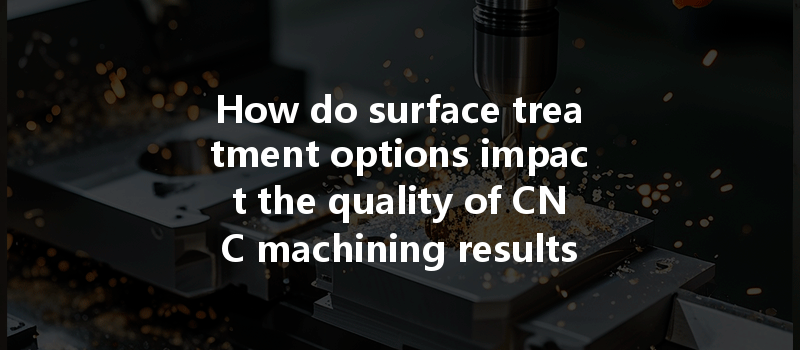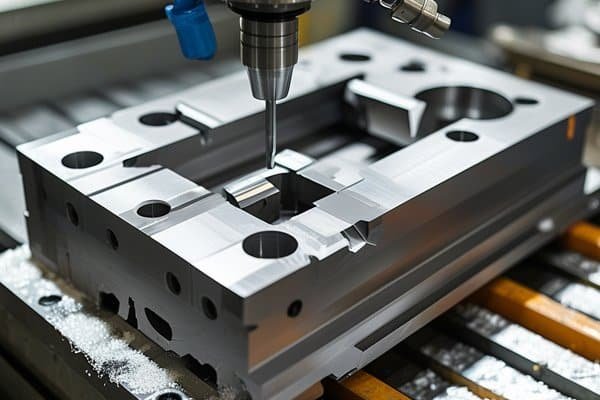Opening
Did you know that nearly 90% of the performance and longevity of a machined part can be affected by its surface treatment? In the world of CNC machining, surface treatments aren’t just an afterthought; they are crucial processes that can significantly influence characteristics such as wear resistance, corrosion resistance, and overall aesthetic appeal. As industries demand higher precision and quality, understanding the role of surface treatments in CNC machining becomes increasingly vital for manufacturers looking to optimize their processes and improve product outcomes.
Understanding CNC Machining and Its Importance
Before delving deeper into the impact of surface treatments, it’s essential to understand what CNC machining entails. Computer Numerical Control (CNC) machining is a dynamic manufacturing process that utilizes computerized controls to operate tools and machinery. This approach provides extreme precision and repeats the production of complex shapes and parts across various materials.
Industries such as aerospace, automotive, medical devices, and consumer products rely heavily on CNC machining to produce high-quality components. With CAD (Computer-Aided Design) transforming traditional manufacturing into a more efficient process, the importance of each detail, including surface treatment, cannot be understated.
Types of Surface Treatments in CNC Machining
There are several surface treatment options used in CNC machining, each with its unique benefits and applications. Below are the most common methods:
Anodizing is primarily used for aluminum parts. This electrolytic process thickens the natural oxide layer on the surface of aluminum, enhancing its corrosion resistance. It can also be dyed to improve aesthetics. Anodizing provides an excellent surface finish, allowing aluminum parts to exhibit expanded durability without adding weight.
This process involves applying a dry powder to a surface, which is then cured under heat to create a hard finish. Powder coating not only provides a durable and attractive finish but is also resistant to scratching, chipping, and fading. This treatment is common in consumer electronics, outdoor furniture, and automotive parts.
Electroplating involves depositing a layer of one metal onto another through electrical current. This treatment is often used to enhance corrosion resistance and improve surface appearance. Used in various industries, from automotive to jewelry, electroplating also allows for the application of materials such as gold, silver, or nickel, depending on the end product’s requirements.
Chemical surface treatments like passivation and phosphating enhance the performance of parts by creating a protective layer on metals. Passivation improves corrosion resistance by removing surface contaminants, while phosphating provides a foundation for further coatings and reduces friction.
Processes such as sanding, blasting, and polishing can create micro-level changes in the surface finish. These methods improve the physical characteristics of a part, reducing friction and enhancing wear resistance.
How Surface Treatments Impact CNC Machining Quality
Given the various surface treatment options available, manufacturers need to understand how these choices can impact the quality of CNC machined components:
A. Wear Resistance
Choosing the right surface treatment can significantly improve a part’s wear resistance. For example, anodized aluminum can withstand abrasion better than untreated surfaces. This is crucial for components that experience friction, such as gears and sliding parts in machinery.

B. Corrosion Resistance
CNC machined parts often operate in challenging environments, making corrosion resistance vital. Surface treatments like electroplating and anodizing create protective layers that prevent rust or other chemical deterioration. This not only extends the life of the part but also ensures it maintains its functionality in demanding applications.
C. Aesthetic Appeal
The visual aspect of machined parts is becoming increasingly important, especially in consumer products. Surface treatments such as powder coating and anodizing can enhance the overall appearance, making products more appealing to customers. An aesthetically pleasing finish can differentiate a product in a competitive market.
D. Tolerance and Precision
Some surface treatments add thickness to components, which can affect tolerances. Manufacturers must consider this when selecting surface treatments, especially in tight-tolerance machining where precision is paramount.
E. Cost Implications
The choice of surface treatment can also impact the overall cost of production. Processes like anodizing and powder coating can increase the final manufacturing costs but may offer long-term savings by enhancing durability. An effective cost-benefit analysis can help manufacturers make informed decisions.
Selecting the Right Surface Treatment for Your Application
Choosing the appropriate surface treatment involves multiple factors. Here are some considerations to guide manufacturers:
In conclusion, surface treatments are not just supplementary add-ons in the CNC machining process but rather integral elements that can dramatically influence the performance, durability, and appearance of machined parts. By understanding the different surface treatment options and their implications, manufacturers can make informed decisions that lead to better product outcomes.
As industries continue to expect higher precision and performance from machined components, the importance of surface treatment will only increase. Therefore, investing time and resources into selecting the right treatments for specific applications can yield significant improvements in quality and efficiency.
This blog underscores the need for CNC machining professionals to rethink how they approach surface treatments—a crucial aspect that could be the difference between an average product and an exceptional one. As manufacturing becomes more competitive and demanding, understanding and implementing proper surface treatments will be paramount to success.
Final Thoughts
By recognizing how surface treatment affects the quality of CNC machining results, manufacturers can leverage this knowledge to create superior products tailored to their customer’s needs. The ongoing evolution in both surface treatment technologies and CNC machining processes will undoubtedly provide exciting opportunities for enhancement and innovation in the manufacturing sector. Let’s prioritize surface treatment strategies to unlock superior quality and sustain competitive advantages in today’s markets.






